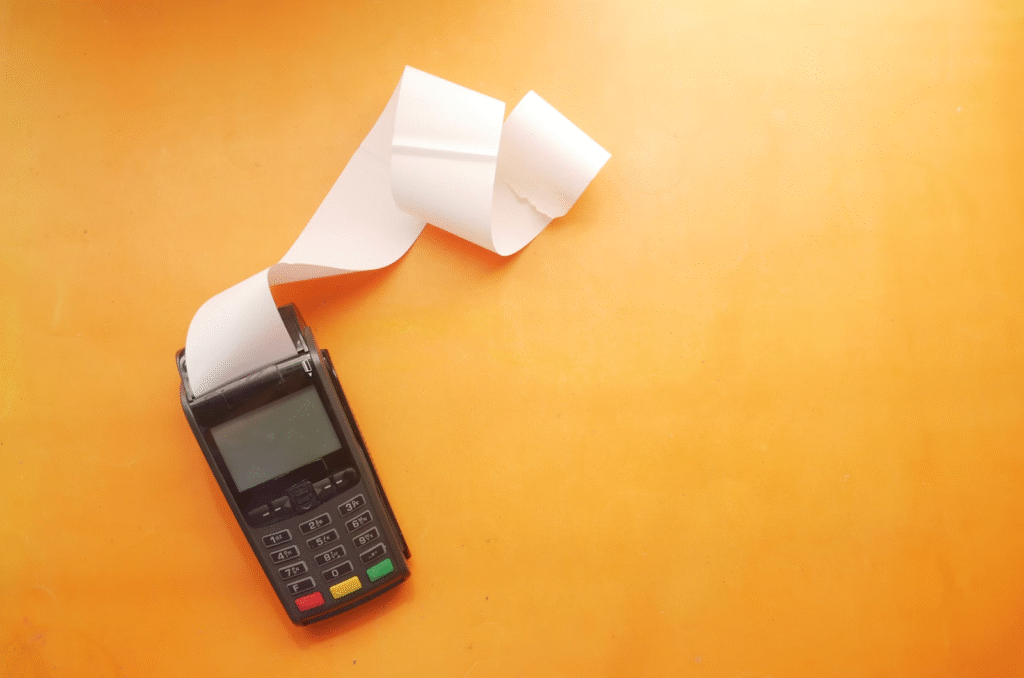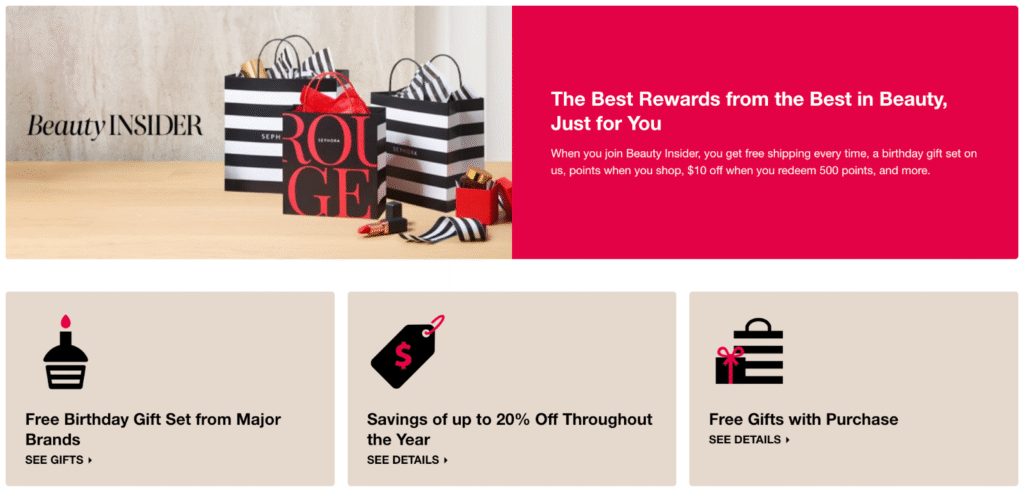Estimated Reading Time: 10 minutes

Most retail loyalty programs today feel like a half-hearted handshake. They promise “exclusive deals” and “member-only perks”, but if we’re being completely honest — nobody’s losing sleep over a 5% voucher that expires in 48 hours.
The problem isn’t that customer loyalty programs in retail don’t work. It’s that they’ve stopped feeling rewarding.
In 2025, retail marketing strategy isn’t about handing out points like confetti. It’s about designing retail customer retention experiences that make shoppers want to come back… not remember to. The brands that win aren’t just tracking purchases; they’re building relationships.
That’s why modern retail store loyalty programs are no longer about gimmicks, instead they’re about personalization, data, and timing. With smarter CRM (Customer Relationship Management) tools and customer retention for retail automation, loyalty platforms turn shopper behavior into personalized rewards that feel human (not transactional).
Brands that know how to track loyalty program effectiveness in retail don’t guess what customers want; they design loyalty systems that evolve with them.
Think of it as marketing 2.0 — where loyalty is less about discounts and more about emotional design.
Let’s dig in.
The Old Playbook Is Dead (And That’s a Good Thing)
Why Transactional Loyalty Fails in 2025
Once upon a time, you could hand out a loyalty card, stamp it ten times, and call it a day. But today, that playbook has officially expired.
Shoppers are craving connections, not just coupons. If your loyalty program only says, “Spend more, get more”, you’re treating customers like ATMs.
The irony? That’s what makes them spend less.
Transactional loyalty ignores the human side of retention. The “why” behind repeat visits. Emotional loyalty, on the other hand, taps into trust, recognition, and identity. It’s the reason someone wears Nike over another brand with the same sneakers over another brand with the same sneakers or keeps buying from a boutique because the cashier remembers their name.
Think about it. When was the last time a discount alone made you feel loyal? Probably never. But when your favorite store recognizes your style, saves your preferences, or remembers your last purchase, you feel seen.
That’s what creates emotional stickiness (the kind that doesn’t fade after a single sale).
The smartest retailers are rewriting the rules by shifting from points-based loyalty to experience-based loyalty. Because when your customer feels like part of a story, they’ll want to see how it ends.
In fact, global retail leaders like Target and Ulta have quietly phased out a rigid point system in favor of hybrid experiences — blending rewards, exclusive access, and emotional engagement.

Start With Emotion, Not Discounts
Emotions Build Loyalty That Discounts Can’t
You can’t bribe your way into someone’s heart… not even with a 20% off.
Discounts might bring customers in once, but emotion keeps them here. It’s why Apple rarely discounts but still has lines around the block. Emotional loyalty turns your brand from a shop into a feeling.
Neuroscience backs this up: emotional connections activate the brain’s reward center more strongly than financial incentives. That means when a customer feels joy or anticipation around your brand, they’re biologically wired to come back.
71% of emotionally connected customers are willing to recommend a brand to others. That’s not luck; that’s psychology.
How to Create Emotional Connection
You don’t need to be a therapist; you just need to have empathy. Here’s how to inject emotion into your retail loyalty strategy:
- Use storytelling in your marketing: talk about values, not just prices.
- Celebrate milestones: a year of being a member, a customer’s birthday, or their 10th purchase.
- Send messages that sound human, not like a bot’s copy-paste.
- Personalize offers to who they are, not what they bought.
Bonus Tip
Bonus tip: Emotional loyalty thrives when you align your brand with a purpose. Think of how The Body Shop uses activism to strengthen loyalty or how Nike’s “Just Do It” isn’t about shoes, but about identity. Emotion makes your brand unforgettable.
Tools like SimpleLoyalty help make this easier — by automating thoughtful touches (like birthday vouchers or appreciation notes) that feel personal, not programmed.
Personalization
Why Personalization Beats Generic Offers
If your promo starts with “Dear Customer,” congratulations, you’ve just reminded them they’re a nobody.
Personalization is the difference between “Buy one get one free” and “Hey Ashley, we saved your favorite scent before it sells out!”. One feels spammy. The other feels special.
Research shows that 71% of consumers expect personalized experiences, and 76% get frustrated when they don’t get them. The future of loyalty marketing lies in small, smart gestures powered by data (not generic blasts).
But personalization isn’t just about using someone’s name. It’s more about timing, relevance, and intent. For instance, sending a “We miss you” voucher after 30 days of inactivity feels personal because it acknowledges behavior. That subtle awareness is what transforms automation into attention.
Real Example:
Let’s take a look at Sephora’s Beauty Insider program. Members get tiered rewards, birthday gifts, and personalized recommendations (all driven by past behavior). It’s not just a loyalty program, but a data-driven conversation.

The program’s real magic lies in its flexibility. Customers can choose how to redeem points, empowering them with autonomy. This small act of choice deepens emotional satisfaction.
Believe it or not, even small retailers can do this with the right tools. A retail CRM lets you segment customers by behavior (first-time shoppers vs VIPs), so your “thank you” message hits differently. Literally.
Omnichannel Loyalty
Why Seamless Experiences Drive Retention
Imagine a customer sees your ad on Instagram, visits your website, adds something to their cart, and later walks into your store — but your cashier has no idea who they are. That’s like forgetting your partner’s name mid-date…
Omnichannel loyalty bridges that gap. It connects online and offline experiences, so your customer’s journey feels continuous. When your CRM, POS, and loyalty system talk to each other, every touchpoint reinforces one thing: “We remember you”.
How to Implement It
- Sync customer profiles across online and physical stores
- Offer digital receipts that tie back to loyalty points
- Reward cross-channel behavior (like browsing online but buying in-store)
- Let customers redeem rewards anywhere
Retail loyalty software like SimpleLoyalty helps retailers centralize these interactions into one smart dashboard.
This is about memory. The best loyalty experiences mimic human relationships: consistent, responsive, and familiar across every touchpoint.
Reward More Than Just Spending
The Power of Non-Transactional Rewards
Here’s the truth: customers aren’t only loyal when they spend — they’re loyal when they care.
Modern loyalty programs now reward engagement: writing reviews, following on social media, attending events, or bringing friends. These micro-interactions build emotional equity, not just transactional value.
Why It Works
It’s psychology again. People just love recognition. By rewarding behavior, you reinforce connection. That’s how brands like Lululemon and Nike keep customers active and attached.
In retail, even small gestures count — a “thank you for your review” message or spotlighting a customer story. Each one signals appreciation.
Make Data Feel Like Service
Use Customer Data Responsibly
Nothing kills loyalty faster than creepy data use.
Your customer’s trust is sacred. So if your loyalty program starts to feel like surveillance instead of service, you’ve already lost.
Be upfront about what data you collect, how it’s used, and how it benefits your customers. When people see value in data exchange, they perceive personalization as helpful instead of invasive.
Smart Data Practices
Use data to anticipate needs, not invade privacy.
For example:
- Recommend based on previous buys
- Ask for preferences directly (and give them control)
- Be transparent about how data improves their experience
When customers feel like you’re using data for them, trust deepens.
Automation Without the Awkwardness
Don’t Let Bots Kill the Human Touch
Automation can either be your best friend… or that one friend who texts you every hour just to say “hey”.
The line between convenience and creepiness is thin. So if your automations are poorly timed or repetitive, they’ll train customers to ignore you.
Worst case scenario, they unsubscribe.
Effective automation feels invisible. It works quietly behind the scenes, surfacing at just the right moment (like when a customer abandons a cart or hits a loyalty milestone.
Humanizing Automation
Think of automation as an assistant, not a replacement.
- Personalize triggers (like a “we miss you” message only after 30 days of inactivity)
- Use real human tone, not robotic phrasing
- Test messages (if you wouldn’t send it to a friend, don’t send it to a customer)
Tools like SimpleLoyalty make this effortless. Remember, automation should always feel warm.
The Psychology of Feeling “Known”
Why Familiarity Beats Frequency
Customers don’t return because you talk to them often; they return because you make them feel understood.
Familiarity builds safety.
Safety builds loyalty.
When a brand understands familiarity, customers stop price-shopping. That’s why personalization, emotion, and timing all matter. Together, they form the psychological glue that keeps people coming back.
This is called the “mere exposure effect”. A psychological phenomenon where repeated positive interactions increase affection and trust. The more familiar a brand feels, the more likely customers are to choose it over competitors.

Build Loyalty Into Every Touchpoint
Every Experience Should Say “We See You”
From your packaging to your emails, every interaction is a chance to build trust. A good loyalty strategy doesn’t live in an app; it lives in every detail.
Ask yourself: does your customer feel acknowledged, or just marketed to? The answer determines if they’ll stay… or stray. Even your store ambiance or post-purchase emails can communicate loyalty. It’s not always about grand gestures; it’s about consistent recognition.
Simplicity Wins Every Time
If It’s Complicated, It’s Forgotten
If your loyalty system needs a manual, consider your customers gone. Customers crave simplicity. “Buy, earn, redeem” should feel natural, not like solving a math equation. In retail loyalty, the simpler your system, the stronger your retention.
That’s why SimpleLoyalty’s approach focuses on effortless loyalty automation. So there’s no need to worry about organizing customers, tracking visits, and rewarding purchases with the technical headache.
Keep Evolving
Loyalty Is Never “Set and Forget”
Customer behavior changes faster than TikTok trends. It’s true.
What worked in 2023 won’t work the same in 2025. If you’re not testing, you’re guessing (and loyalty deserves way better than guesswork).
How to Stay Ahead
- Review marketing/SMS/email campaigns quarterly
- Retire outdated rewards
- Refresh messaging as your brand evolves
- Keep tabs on trends in restaurant and retail loyalty
Conclusion
Customer loyalty is built on purpose.
The best retail loyalty programs don’t just boost short-term sales; they cultivate long-term relationships that anchor your brand in customers’ daily lives. Today, shoppers have endless choices but genuine connection is what drives retail customer retention.
When your brand makes customers feel understood and appreciated, loyalty stops being a transaction and becomes a relationship.
Modern customer loyalty programs in retail go beyond collecting points. Every interaction (whether online or in-store) should remind customers that they’re seen. That’s how great retail marketing strategies turn casual shoppers into lifelong fans.
To sustain that loyalty, you need data that feels human. With tools like SimpleLoyalty, retailers can easily see how to track loyalty program effectiveness in retail and refine rewards that truly resonate.
The key strategies that actually retain customers in 2025: emotion-first engagement, hyper-personalization, omnichannel consistency, rewarding non-spending behaviors, respectful data use, and thoughtful automation. Master these, and your loyalty program stops being a points system and starts being a retention enging.
Because in the end, customer retention for retail is all about making them want to stay.

